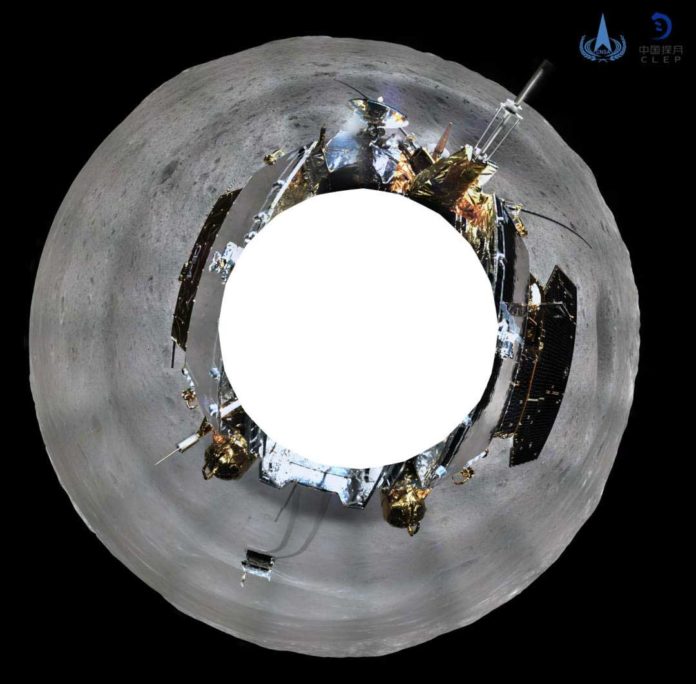Earlier this year, the China National Space Administration (CNSA) landed the robotic probe Chang’e 4 in the unexplored South Pole-Aitken basin, the largest, oldest, deepest, a crater on the moon’s surface. Now, on Friday, January 11, the team behind Chang’e 4 mission has shared images back to earth through a special relay satellite.
The picture shows the grey moonscape, the lander and the rover with the track marks it left behind. The image is a circular, 360-degree shot, which scientists used to create another wide panoramic picture.
It also shows that the moon’s far side show is surrounded by lots of craters of different sizes.
Scientists noted, “We have completed the preliminary analysis of the lunar surface topography around the landing site based on the image taken by the landing camera.”
With the assistance of the relay satellite Queqiao (Magpie Bridge), the rover Yutu-2 (Jade Rabbit-2), the lander of the Chang’e-4 probe took photos.

“The scientific instruments aboard the probe worked well, and the images taken by the probe and the detection data have been sent back to ground control.”
Li Chunlai, deputy director of the National Astronomical Observatories of China said, “One of the published images is a 360-degree panorama which was pieced together from 80 photos taken by a camera on the lander after the rover drove onto the lunar surface.”
“From the panorama, we can see the probe is surrounded by lots of small craters, which was really thrilling.”
“The Chang’e-4 landed at an altitude of nearly minus 6,000 meters. The deepest region on the moon, where there is an altitude of minus 9,100 meters, is about 700 kilometers to the south of the probe.”
“The information from the depths of the moon will be one of our focuses in the exploration.”
The CNSA also released a video of the landing process of the Chang’e-4, which was produced by processing more than 4,700 pictures taken by a camera on the probe.
The video, lasting about 12 minutes, shows the probe adjusted its altitude, hovered and avoided obstacles during the descent process.
“From the video, we can see more dust was thrown up when the Chang’e-4 touched down on the far side of the moon compared with the landing of Chang’e-3, which indicates that the lunar dust at the landing area of Chang’e-4 is thicker than the region where Chang’e-3 landed,” said Zhang Hongbo, chief designer of the ground application system of Chang’e-4.
“The thicker dust shows that the lunar regolith in the region has undergone longer space weathering, which also gives strong evidence of the region being older. We will conduct comparative research between the landing areas of Chang’e-3 and Chang’e-4,” Li said.
